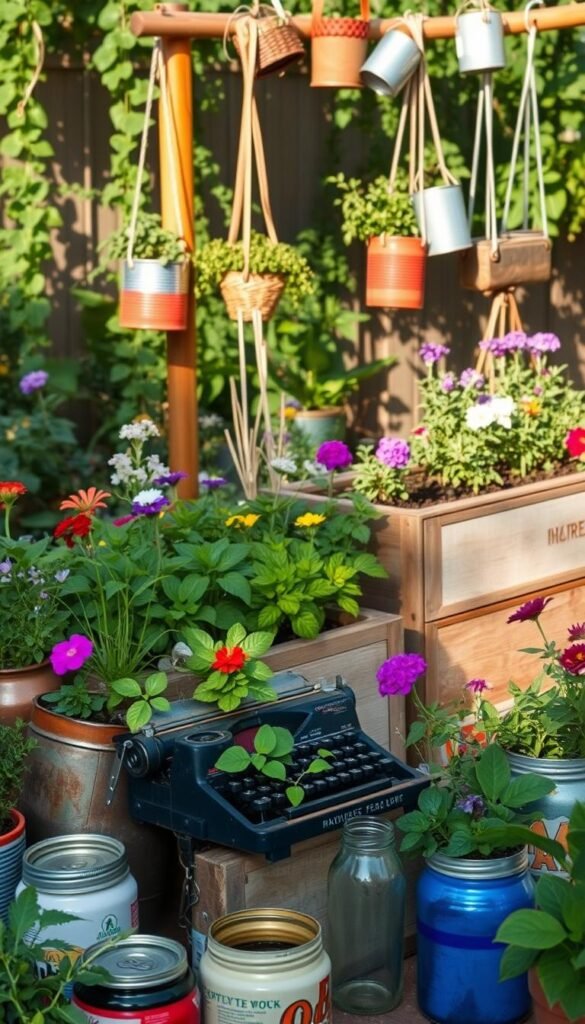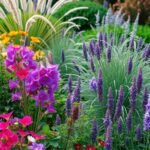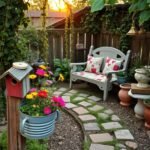Ever thought your old boots or chipped teapots could become something beautiful? DIY garden projects using everyday items are gaining popularity across the U.S. Not only do they save money, but they also help reduce waste.
This guide shows you how to turn unused household items into unique planters. From worn-out shoes to broken furniture, the possibilities are endless. Best of all, these projects are simple enough for beginners.
Eco-conscious homeowners love upcycled planters for their charm and sustainability. They add personality to any space while keeping trash out of landfills. Plus, they make great family activities—kids enjoy giving old items new life.
Ready to explore fun ways to repurpose your junk planters? Let’s dive into creative ideas that transform clutter into garden treasures. For more inspiration, check out our guide on upcycled container gardening.
Why Creative Gardening Hacks Transform Your Space
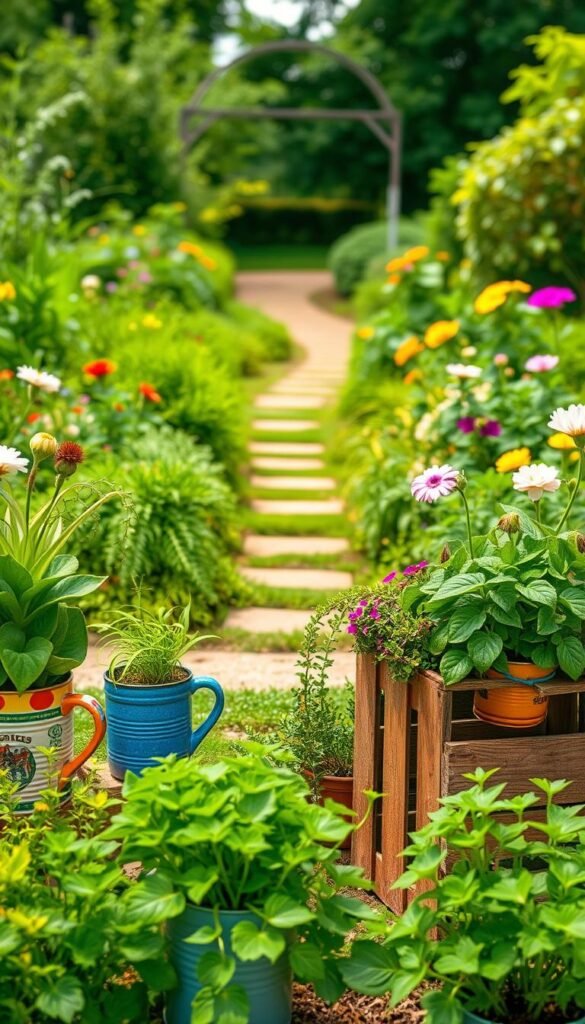
What if your trash could bloom? Repurposing everyday items isn’t just fun—it’s a game-changer for your outdoor space. These projects breathe new life into forgotten objects while cutting waste.
Eco-Friendly Benefits of Giving Items a Second Life
Every year, U.S. households toss over 292 million tons of trash. Much of it ends up in landfills. By upcycling, you shrink your carbon footprint and keep materials in use longer.
Old bathtubs become flower beds. Mismatched silverware turns into plant markers. Each repurposed item means one less thing polluting the planet. It’s sustainable landscaping at its simplest.
“The best way to reduce waste is to not create it in the first place.”
How Quirky Containers Boost Your Garden’s Look
Unique planters aren’t just eco-friendly—they’re eye-catching. A vintage colander bursting with herbs or a painted tire filled with petunias becomes a conversation starter.
These pieces add personality. They turn bland corners into focal points. For more ideas, explore flea market finds that elevate garden aesthetics.
Plus, crafting them sparks joy. Studies show DIY projects reduce stress. Your outdoor space becomes a reflection of your creativity—a win for you and the environment.
Finding the Perfect Junk for Your DIY Planters
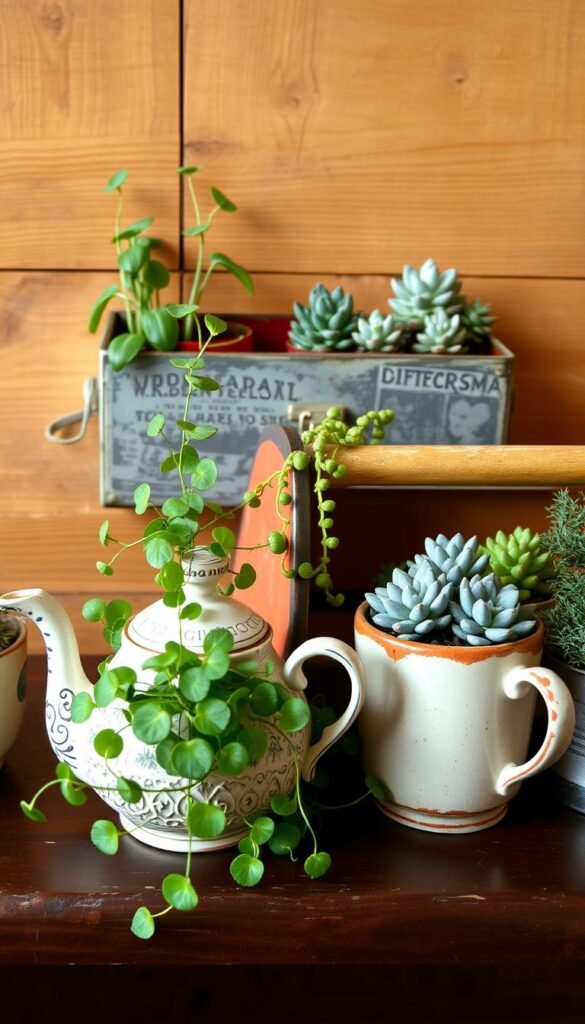
One person’s trash becomes a gardener’s treasure with these ideas. Look beyond traditional pots—your home is full of items begging for a second life as household item planters. From forgotten corners to garage sales, inspiration is everywhere.
Household Items You’d Never Think to Reuse
Broken birdcages, rusty toolboxes, and even old sinks can become eye-catching homes for plants. Vintage wagons make whimsical herb gardens, while muffin tins are perfect for succulents. For more rustic ideas, explore these clever container hacks.
Don’t overlook:
- Retired wheelbarrows for sprawling flowers
- Chipped teacups for tiny cacti
- Plastic buckets (sanitized) for veggies
Avoiding Common Pitfalls in Material Selection
Garden safety starts with choosing non-toxic containers. Avoid pressure-treated wood—it leaks harmful chemicals. Test items for water resistance; if puddles linger, add drainage holes.
Always clean thoroughly. Scrub paint cans with vinegar, and line porous items with landscape fabric. For step-by-step prep, check out this upcycling guide.
“Repurposing requires creativity, but safety comes first.”
Step-by-Step: Turning Trash into Treasure
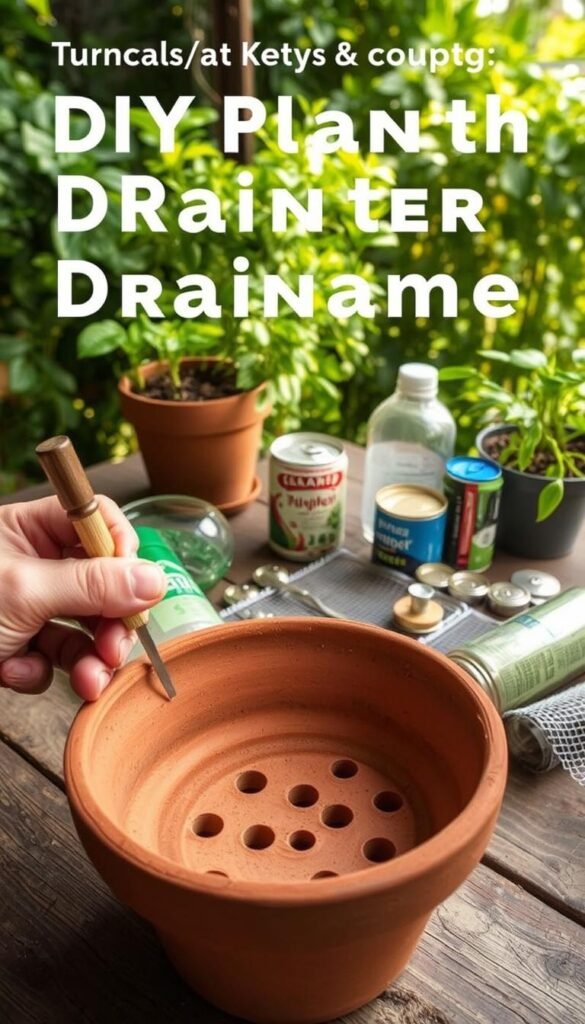
Ready to transform everyday items into stunning plant homes? Follow these simple steps to create DIY planter drainage and add artistic flair. Whether you’re using teacups or toolboxes, proper prep ensures your plants thrive.
Prepping Your Containers for Proper Drainage
Good drainage keeps roots healthy. Here’s how to modify different materials:
- Ceramic/porcelain: Use a diamond-coated drill bit to prevent cracks.
- Metal: Opt for a high-speed metal drill bit—go slow to avoid overheating.
- Plastic: A sharp utility knife works for thin plastics; thicker ones need a twist bit.
Always wear safety goggles. For wooden items, line with liquid rubber before planting. More tips on upcycled planters show how to waterproof unique containers.
Painting and Decorating for a Personal Touch
Make your painting planters pop with these pro techniques:
| Material | Paint Type | Drying Time |
|---|---|---|
| Metal | Rust-Oleum outdoor | 2 hours |
| Ceramic | Acrylic enamel | 24 hours |
| Wood | Exterior latex | 4 hours |
Popular design themes:
- Rustic: Distressed finishes with earthy tones
- Bohemian: Bright patterns and metallic accents
- Modern minimalist: Solid colors with clean lines
“Seal designs with clear polyurethane varnish—it protects against rain and UV rays.”
Embedded Content: Quick Video Demo
Watch our garden DIY video below for a visual guide. It covers drilling holes in a teacup and transforming it with paint:
[embedded content video]
This upcycling tutorial makes the process easy. Pause and rewind as needed—your perfect planter is just minutes away!
Ready, Set, Grow—Your New Planters Await!
Your creative garden inspiration starts now! Begin with easy-care herbs like basil or succulents in small containers. These forgiving plants let you test your new planters without stress.
Keep your creations thriving with simple planter maintenance tips. Drill drainage holes in plastic bins, add gravel to ceramic pots, and wrap metal containers in burlap for winter. Small steps make a big difference.
Match plants to your container’s style. Trailing ivy looks stunning in hanging baskets, while strawberries thrive in upcycled colanders. For more seasonal planting ideas, explore our budget-friendly container guide.
Share your unique designs with #UpcycledGardenMagic. Then, keep the momentum going—try new projects each season. Ready for your next DIY adventure? Subscribe for fresh ideas delivered to your inbox!

